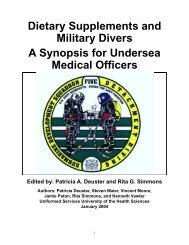Force Health Protection: Nutrition and Exercise Resource Manual
Force Health Protection: Nutrition and Exercise Resource Manual
Force Health Protection: Nutrition and Exercise Resource Manual
Create successful ePaper yourself
Turn your PDF publications into a flip-book with our unique Google optimized e-Paper software.
pressure on the back <strong>and</strong> legs <strong>and</strong> has a “braking effect”. The key<br />
is to run “tall” <strong>and</strong> remain relaxed: allow your shoulders to hang<br />
in a relaxed manner <strong>and</strong> let your arms drop from time to time.<br />
◆ Arm Drive - Relax your shoulders, elbows, wrists <strong>and</strong> fists.<br />
Occasionally let your arms hang by your sides <strong>and</strong> loosely shake<br />
them out. Vigorous pumping of your arms is unnecessary during<br />
distance running.<br />
Training Surfaces<br />
The best running surfaces are unbanked, smooth cinder tracks or<br />
artificially surfaced tracks. Grassy trails can hide uneven terrain that may<br />
aggravate biomechanical problems or cause injury. Concrete <strong>and</strong> asphalt<br />
sidewalks <strong>and</strong> roads are often banked <strong>and</strong> provide no shock absorption, so<br />
you need shoes with good shock absorption. Beaches also tend to be slanted,<br />
whether the s<strong>and</strong> is firmly packed or loose. Avoid running barefoot on this<br />
surface, no matter how good the s<strong>and</strong> feels between your toes! Lastly, always<br />
change the direction you run on a track or path from one session to the next<br />
to reduce any biomechanical problems that may result from the track<br />
conditions <strong>and</strong> repetition.<br />
Other running surfaces include treadmills <strong>and</strong> water. Most<br />
treadmills are state of the art in terms of cushioning <strong>and</strong> you can<br />
control the speed <strong>and</strong> intensity of your workout. Deep water or<br />
aqua running is mainly used for rehabilitation as it takes the<br />
pressure off muscles <strong>and</strong> joints while providing cardiovascular<br />
benefits. This type of exercise is becoming popular at various<br />
swim centers.<br />
Beginning a Running Program<br />
When transitioning from a walking to a running program, combine<br />
walking <strong>and</strong> jogging, gradually increasing the time spent jogging while<br />
decreasing the time spent walking. Remember that your exercise intensity<br />
should be between 60%-75% of your max HR, so adjust your pace accordingly.<br />
Table 6-2 outlines a beginning jogging program to help make your transition<br />
easier. Advance to the next phase once you can consistently perform the<br />
walk-jog cycles outlined within your target heart rate zone.<br />
If you are interested in running for fitness, a good goal is 6 to 8 miles<br />
per week, spread over 3 running days of 2 to 3 miles each. Maintaining this<br />
weekly mileage is sufficient for improving or maintaining your aerobic<br />
fitness. The duration of your runs will depend solely on your pace. Distance<br />
is the goal, so take walking breaks as necessary until you have reached your<br />
target mileage. Start a running log to track your workouts (Worksheet B-1).<br />
Note mileage, time, heart rate, <strong>and</strong> perceived exertion (see Chapter 5).<br />
<strong>Nutrition</strong> <strong>and</strong> <strong>Exercise</strong> <strong>Resource</strong> <strong>Manual</strong> 49




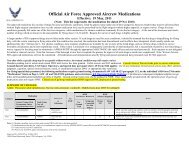
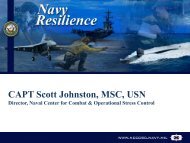
![Body Composition and Military [PDF] - Human Performance ...](https://img.yumpu.com/43269347/1/190x245/body-composition-and-military-pdf-human-performance-.jpg?quality=85)
![Tips for Grocery Shopping [PDF]](https://img.yumpu.com/37447379/1/190x245/tips-for-grocery-shopping-pdf.jpg?quality=85)
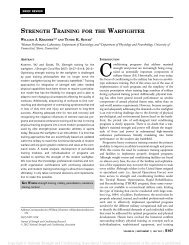
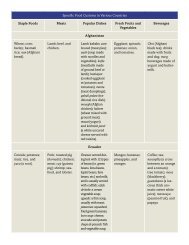
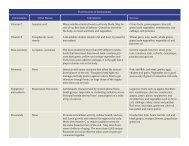
![Synthetic Drugs [PDF] - Human Performance Resource Center](https://img.yumpu.com/37447322/1/190x245/synthetic-drugs-pdf-human-performance-resource-center.jpg?quality=85)
